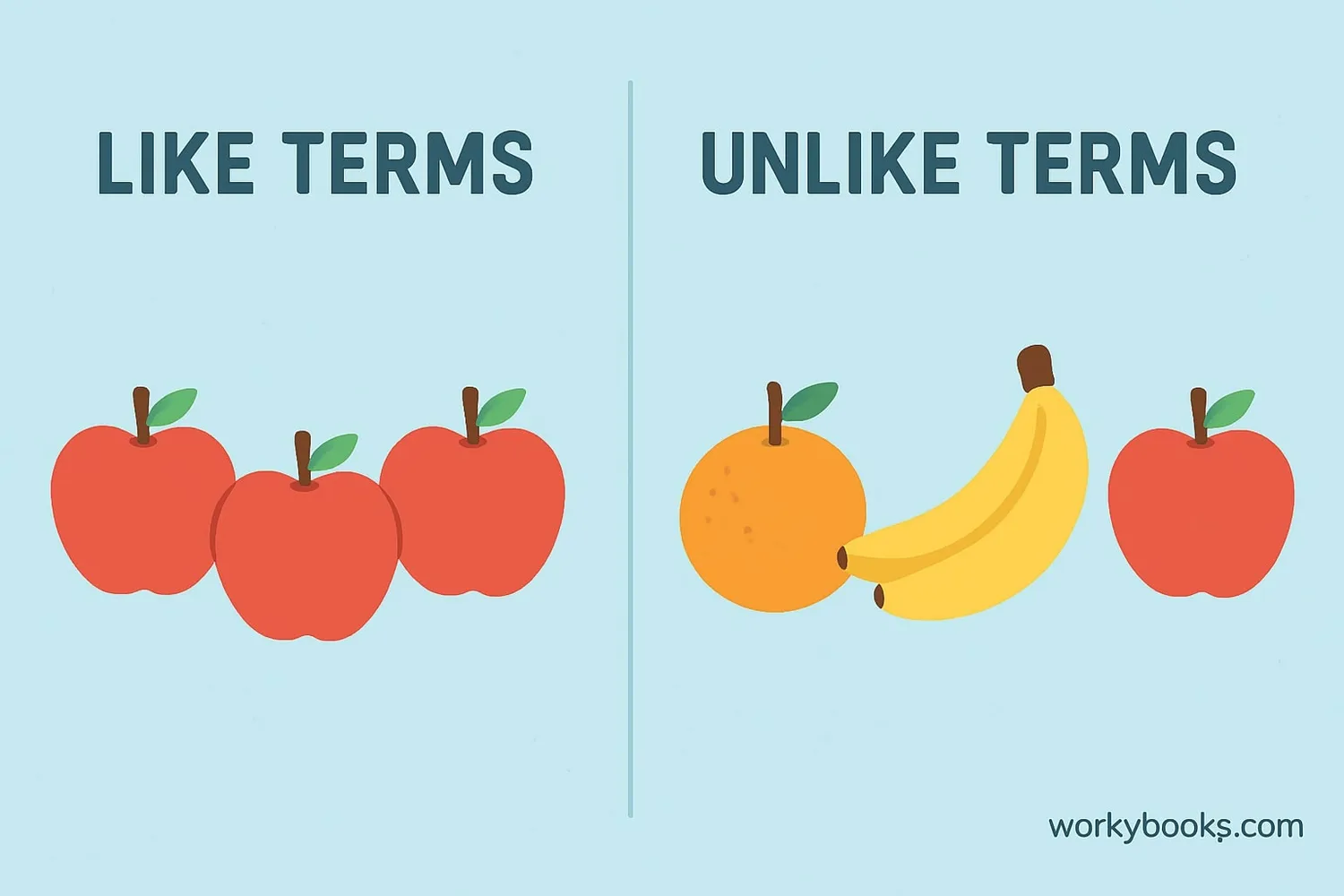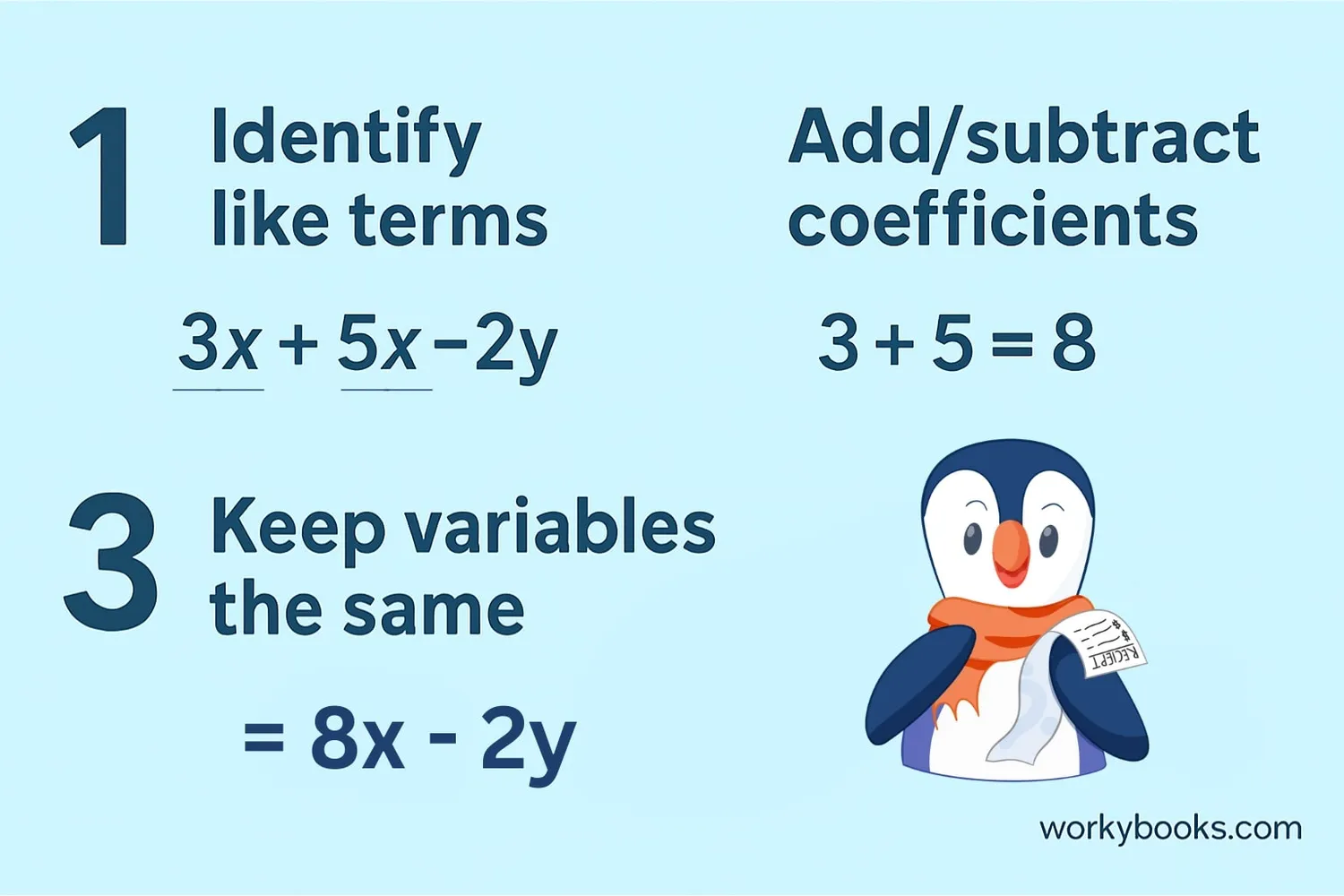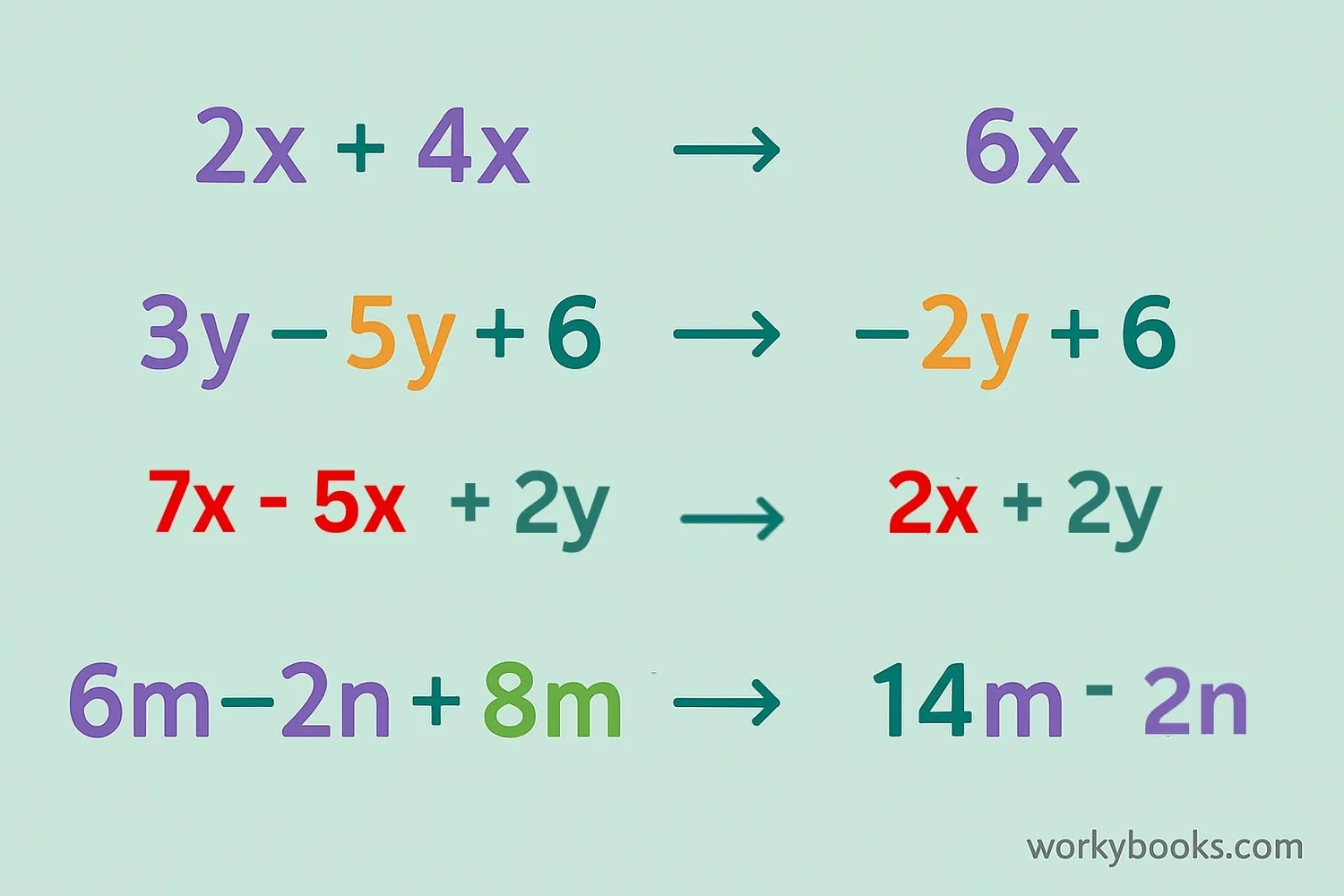Like Term - Definition, Examples, Quiz, FAQ, Trivia
Learn to identify and combine like terms with simple explanations and practice activities
What are Like Terms?

Like terms are terms in an algebraic expression that have the same variables raised to the same powers. Only the coefficients (numbers in front) can be different. Think of them as similar items that can be grouped together.
For example:
Unlike terms are terms with different variables or exponents. For example:
- 4x and 7y are unlike terms
- x² and x are unlike terms
- 5 and 3x are unlike terms
Key Concept
Like terms must have identical variable parts. The coefficients can be different, but the variables and exponents must match exactly.
How to Combine Like Terms

Combining like terms means simplifying an expression by adding or subtracting terms that have the same variables and exponents. Here's how:
Combining Like Terms
Add or subtract the numbers in front while keeping the variable part unchanged.
Remember
When combining like terms, only the coefficients change. The variable part stays exactly the same.
Examples of Combining Like Terms

Let's look at more examples to understand how to combine like terms:
Practice Tip
Always look for terms with exactly the same variables and exponents. Remember that constants (numbers without variables) are like terms with each other!
Practice Quiz
Test your understanding of like terms with this 5-question quiz:
Frequently Asked Questions
Here are answers to common questions about like terms:
Math Trivia
Discover interesting facts about algebra and mathematics:
Origin of Algebra
The word "algebra" comes from the Arabic word "al-jabr" meaning "reunion of broken parts." It was first used in the 9th century by Persian mathematician Muhammad ibn Musa al-Khwarizmi.
Why We Use Variables
Mathematicians use variables like x and y to represent unknown values. This allows them to solve problems without knowing all the numbers first. The use of letters for unknowns started with French mathematician François Viète in the 16th century.
Math in Nature
Algebra isn't just in classrooms! Plants use mathematical patterns in how their leaves grow (phyllotaxis), and bees build honeycombs with perfect hexagonal shapes that follow algebraic principles.
Young Math Genius
The youngest person to discover a new math theorem was 16-year-old Juliette Salomé Davier in 2023. She created a new way to solve algebraic equations that mathematicians had struggled with for decades.


